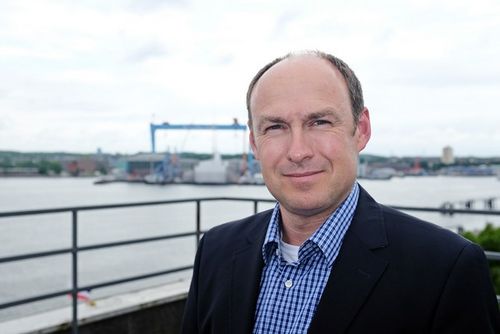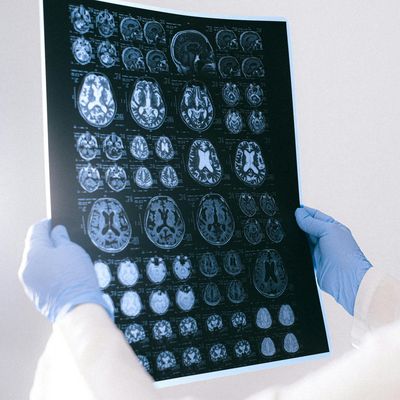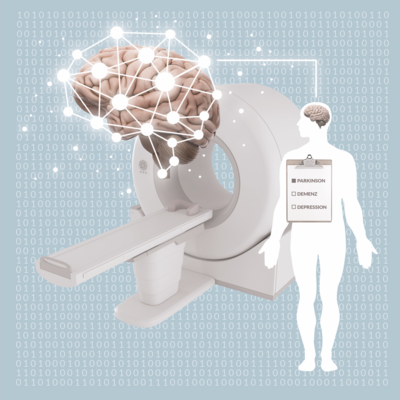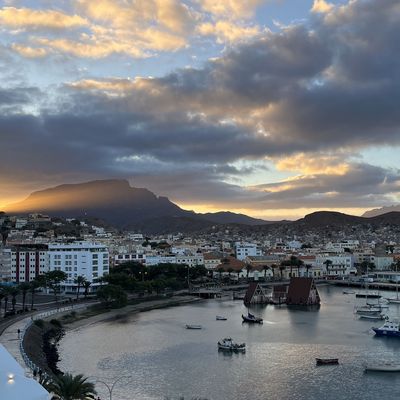“Marine sciences can help us understand climate change”
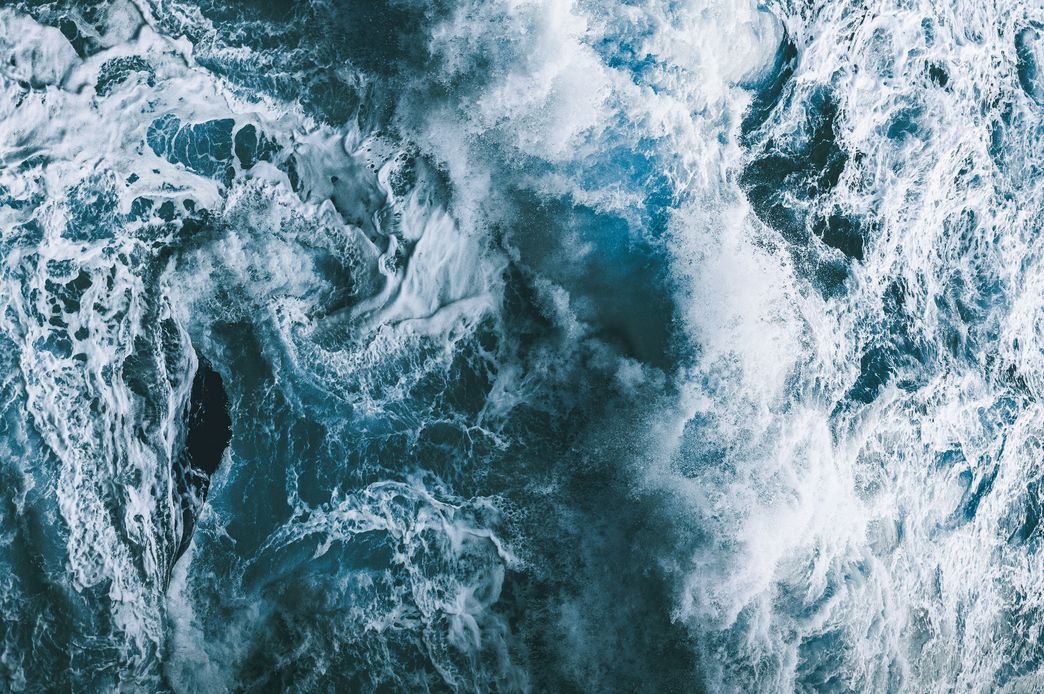
Arne Biastoch is an oceanographer at GEOMAR in Kiel, where his research includes a focus on the role the powerful ocean currents system plays for our planet – and how climate change is impacting this system. Working with complex data and mathematical models is an indispensable part of this research – and a skill Biastoch is sharing with young scientists at the MarDATA Helmholtz Graduate School.
Let’s start with the key question: Mr. Biastoch, what first attracted you to the marine sciences? “It really sounds like a cliché,” Biastoch says, laughing. He then goes on to talk about his childhood in Husum, a German town exposed to the rough conditions of the North Sea, and his love of sailing and surfing as a boy, far out in the sea of endless blue, in an expanse so full of the unknown. What lies below the surface? How does this vast system of oceans work, what drives it, and how do its enormous and complex currents develop? “I always knew I wanted a job working with the ocean somehow – as a scientist.”
Life and Research by the Sea
Biastoch assumes a relaxed pose this morning behind his standing desk at GEOMAR, the Helmholtz Center for Ocean Research in Kiel. A calendar with pictures of ocean waves hangs behind him in his office bookcase, a star-shaped shell sits next to it. Wearing a light-blue checkered shirt and black rimmed glasses, Biastoch has brought a cup of coffee along to our Zoom call. Visibly in good spirits, he is excited to start talking about his research, about the subject that has always driven him. He has lived by the sea his entire life, having spent his childhood by the North Sea before studying by the Baltic Sea in Kiel and completing a postdoc by the Pacific in San Diego, and then returning a number of years ago to Kiel, the state capital of Schleswig-Holstein by the Baltic. Today, Biastoch is a professor of oceanography at GEOMAR, specializing in ocean dynamics in the research field of ocean circulation and climate dynamics.
“We were an exotic species during our degree.”
“Presumably, no one thought you could earn a living from physical oceanography. Of the forty students on the course, maybe ten completed a degree, and I was the only one who went on to do research. Climate hardly came up during the course, it simply wasn’t such a ubiquitous topic in 1987; at least, it wasn’t as significant for our understanding of climate change as it is today. These days, earth system physics is a Bachelor’s program that combines oceanography, meteorology and geophysics, because it’s been clear for some time now that you have to look at the ocean if you want to understand climate change. There’s even a Master’s in climate physics now.”
But even back in the 1980s, sea expeditions were already part of the course. Biastoch was fascinated by the idea of taking a ship out onto the Atlantic or the Baltic and lowering measuring equipment into the water to gage the salt content or temperature. “In some cases, we put down anchoring for large-scale systems so we could measure currents over a number of years.” It’s the same question he had as a boy: How do these currents actually work? Biastoch quickly understood that measuring on its own wouldn’t get him anywhere. It’s simply a way of recording individual points in an endless ocean, but the big picture is missing. Patterns, correlations, and the relevance of these movements under the water only become apparent when a large number of measurements are combined in a computer model with the help of math and physics. “I was impressed by how well current systems can be described using math and physics.” Simulation models were Biastoch’s passion – and this was what brought him to South Africa.
“Why don’t you do it, Biastoch?”
The place was Kiel, the time the early 1990s; Biastoch was looking for a topic for his doctoral thesis. As chance would have it, a professor from South Africa was visiting his doctoral supervisor in Kiel. The African professor said, “We still don’t have a simulation model for the currents in South Africa.” “Well, I never,” said his supervisor. “Then why don’t you do it, Biastoch?” The young researcher hunted down programs and high-performance computers and took a number of trips to the tip of the African continent.
“The system of currents around South Africa is highly dynamic - very changeable and difficult to measure and model.”
“Starting out, my aim was to find out how it works at a regional level. As time passed, I realized that what happens there has an influence on the global climate, because the Gulf Stream system in the North Atlantic is linked to currents around South Africa. There is a network of currents that spans the globe, made up of warm currents on the surface and cold currents deep in the ocean. It works like a giant heater. In the north, the Gulf Stream transports warm water on the surface to northern regions, giving Europe a mild climate. Around South Africa, on the other hand, the Agulhas Current feeds warm water from the Indian Ocean into the Atlantic. Some of this water can later be found in the Gulf Stream. So, when something changes in the waters around South Africa, the northern elements change, too. All of this was a completely new finding.”
He adds: “Another finding had to do with the Mozambique Channel between Madagascar and the coast of Africa. Previously, scientists thought there was a continuous flow from the Equator to the southern tip of Africa. In the physical and mathematical model that I simulated on a computer as a doctoral candidate, it became clear that these flows are vortexes. I was able to back up the simulation to a certain extent with early satellite data. But my model was only proven to be correct a year or two later when some colleagues from the Netherlands verified it using shipboard measurements.”
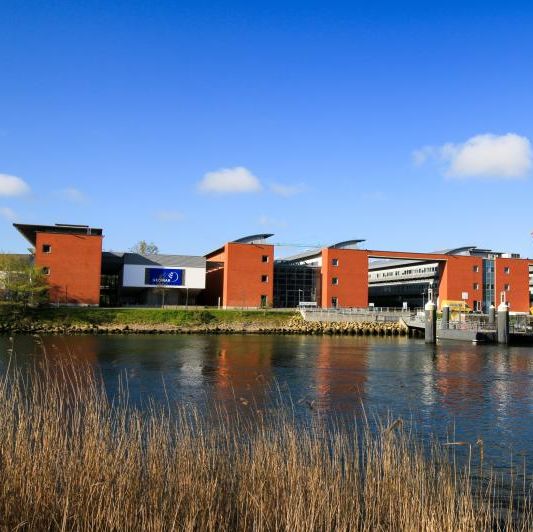
GEOMAR Helmholtz Centre for Ocean Research Kiel
GEOMAR Helmholtz Centre for Ocean Research Kiel
GEOMAR is one of the world's leading institutions in the field of marine research. GEOMAR researches the global ocean from the seafloor to the atmosphere, covering a unique spectrum of physical, chemical, biological and geological processes in the ocean. Core topics of research at GEOMAR are Ocean and Climate, Marine Ecosystems and Biogeochemical Cycles, and Seafloor Hazards and Benefits. They are studied in the following research areas:
- Ocean Circulation and Climate Dynamics
- Marine Biogeochemistry
- Marine Ecology
- Dynamics of the ocean floor
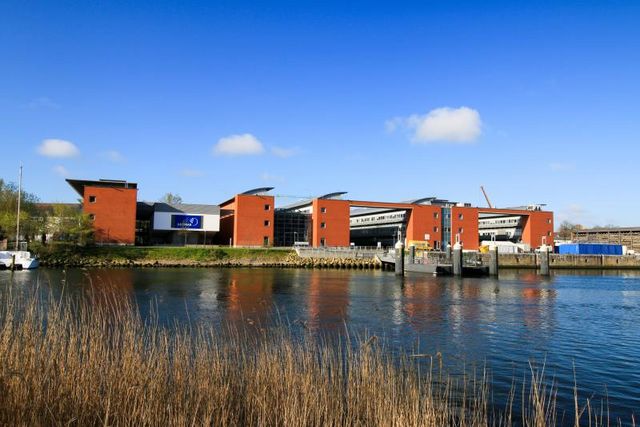
Data Science for Ocean Current Simulations
The results from Biastoch’s doctoral thesis paved the way for a breakthrough in his scientific career. He took lecture tours and built up research partnerships with scientists in South Africa. Later, he went on to become a professor at GEOMAR and, in 2019, the co-founder and spokesperson for the MarDATA Helmholtz-School for Marine Data Science, a graduate program at the interface between the data sciences and marine and earth system sciences. “The data sciences have been absolutely essential for many years now,” Biastoch says. Data on the oceans is compiled by the terabyte around the world now – on aspects from ice tremors and earthquakes under water through to currents and weather data over the ocean. New methods are needed to record and effectively assess this data. “Data science has become our fourth paradigm – in addition to measuring, modeling, and theory.” One of Biastoch’s doctoral candidates is currently using data science methods to investigate where measurements need to be taken to obtain representative data for the Gulf Stream system. The ocean is vast, and many measurements can only be carried out with a great deal of difficulty and expense. “A lot of treasure lies buried in the data,” says Biastoch. “We need data scientists to uncover it.”
“Look at this,” Biastoch says, opening a simulation on his screen. An animated globe appears, showing a blue/red line snaking between Central America and Europe. At first, it’s continuous, like a string of yarn, before breaking down into individual pieces that spin as they move towards Europe – these are the vortexes. “These simulations work like a weather forecasting model, with the only difference being that we’re simulating currents rather than weather, and we aren’t predicting the future but rather trying to understand the past.” After all, weather data is also needed to simulate the ocean system – and, of course, this data is only available once the weather has actually happened.
“One of the biggest supercomputers in Germany, in Jülich, takes months to run calculations for a model like this – and this is how it records the currents in every depth of water, from the surface to the seabed.”
“We now know that currents sometimes move in vortexes, often measuring several hundreds of kilometers in diameter. Creating an accurate visualization of them is more difficult than it is with continuous currents. Measurements taken at the same location might show a northward current one day, and one moving south another day. There’s not much you can do with that. Which is why we need good data, supercomputers, and AI that link everything together to give us the big picture. There are still so many things to explore in this area: Do currents reduce or enhance the transport of warm water? Is it a consequence of climate change in this case, or natural variability?”
Interdisciplinary Cooperation Required
Biastoch and his team are increasingly collaborating with colleagues from other scientific disciplines. “When we talk to chemists, geologists, and biologists, this prompts new ideas that help us arrive at a better understanding, for instance, of currents and the role they play in the ecosystem.” An example of this is the offspring of glass eels, which are spawned in the Sargasso Sea off the coast of Florida and then slowly carried by currents to Europe, where the swim up rivers. Small, regional currents determine how quickly the young eels arrive in Europe. If they don’t manage to reach the continent within two years, they die. They are unable to survive long-term in the open sea. So, what happens if the climate changes and the current routes along with it? “There are so many encompassing questions like this one", Biastoch is convinced. And he explains: “The atmosphere, wind, evaporation, and precipitation are closely interlinked as well. When it rains on the ocean, more fresh water is added and the salt content decreases. And what are the consequences when glaciers on mainland Greenland melt and shed large quantities of fresh water into the sea? Why is the sea level rising more than the global average in a particular region, while decreasing in others? And finally, what role does the distribution of heat in the ocean play – this is a key question for the coming decades."
“Marine sciences can help us understand climate change better.”
“After all, the oceans are the largest heat buffer on Earth; they absorb 90 percent of the heat on the planet and sequester CO2. Currents distribute the heat and carbon. How does this work? What is already changing? Unfortunately, currents are so variable and diverse that small changes are only perceptible much later on. The crucial thing is identifying the tipping points and mechanisms that cause small changes to accelerate. Climate models show us that the Gulf Stream’s circulation rate is set to decrease in the coming years. But it’s likely that we haven’t reached the tipping point yet; there’s a lot of debate on this in the scientific community. If it were to happen, something that occurs over very long, geological time scales, the system would come to a complete halt. We would have an ice age in Europe. If the changes took a moderate course, on the other hand, the cool water could slow the heating of the atmosphere.”

MarDATA - Helmholtz School for Marine Data Science
MarDATA - Helmholtz School for Marine Data Science
Data Science for the Ocean
MarDATA offers young scientists the unique opportunity to develop data science methods specifically for the study of the ocean. This combination of Data Science and marine science is unique in Germany. It has the goal of defining a new type of "Marine Data Scientists" and training them in a structured doctoral program. Scientists from computer science, information technology and mathematics work together on marine topics. This includes modeling on supercomputers, (bio-) computer science and robotics or statistics and big data methods.
Read more about MarDATA here!

Understand in Order to Act
Biastoch wants to solve the riddles behind this powerful system through his research. Working with a startup, his team is currently developing a marine navigation system, which would essentially be a digital route planner showing the fastest way through the ocean using the least fuel. AI models calculate currents that are precise to the day and exact location. If ships were to use these models as support while navigating the ocean, they would consume less heavy fuel. “This approach has already worked in a computer model. A container ship that takes the optimal route from Florida to Europe consumes up to 10 percent less fuel and thus has lower CO2 emissions, too.”
Biastoch takes a seat on his black swivel chair and gives it a push to slide over to his computer on the desk. The calendar on the screen is full of appointments. Giving lectures, conducting negotiations with funding agencies, bringing new partners for MarDATA on board, evolving the school’s concept, recruiting doctoral candidates to work in the sciences. Doesn’t his list get a bit long sometimes? Biastoch laughs. “You know, it’s actually really motivating when things are happening.” While he was initially spurred on by his own successes, he is now increasingly excited by the work of his team, his young researchers. Even now, he remains fascinated by this powerful system made up of the oceans and the impacts it has on the climate – a system that is faltering in the face of change. But Biastoch has no intention of sounding the alarm on approaching catastrophes. What he wants is to understand. “It’s true that we have only had a good understanding of our oceans for the past 20 years. But we can now use this data as the basis for simulating climate models for 20 years into the past and future,” Biastoch says. “And that’s the next step toward gaining a better understanding – and taking action.”
Author: Anja Dilk

